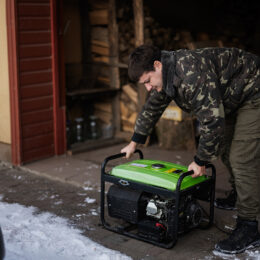
Photo by Innerglass Window Systems
Windows add a lot of character to our homes — especially old homes that still have original frames and panes. But they are also an important contributor to the efficiency and comfort of your home. Old ones can be drafty in winter and seem to let some sunny rooms overheat in summer.
Replacing windows is costly, and it could take 20 years of energy savings to recover the investment. And, less expensive replacement windows might be efficient but might take away some of your home’s vintage charm.
There are some significant improvements you can make to existing windows without investing a large amount of money or time to deal with heat loss in winter and heat gain in the summer.
• Weather stripping. Energy loss and drafts often occur in the cracks between the components of the window. Weather stripping can be used for areas where a window’s movable parts meet the window frame. Retailers offer a variety of weather stripping for different types of windows. These materials are low-cost, easy to apply and can pay for themselves in energy savings in as little as one year. Ask your local retailer for guidance.
• Caulking. The seam between the window frame and the wall is another common source of air leakage. For anything less than ¼ inch wide, fill it with caulk; for anything larger, use expanding foam and paint over it. Be sure to follow the manufacturer’s instructions.
• Re-glazing. If the window pane is loose, or the glass is cracked or missing, it’s probably costing you additional money. If you’re handy, it is possible to re-glaze a window yourself, or there may be a local shop in your area that will do it.
• Storm windows. Installing exterior or interior storm windows can sometimes produce as much savings as a full replacement. It’s possible to order these windows to the exact size of your window opening. Recent testing by a national laboratory showed that storm windows could cut heating costs by 7 to 12 percent.
• Window coverings. Another strategy to consider is window coverings. There are many types, including interior roller shades, cellular shades or draperies. Recent laboratory tests showed that cellular shades could cut heating or cooling expenses by 10 to 16 percent. Cellular shades can be purchased with a lighter reflective side and a darker, heat-absorbing side. Some can even be reversed with the change of seasons.
• Draperies. Though usually less efficient, drapes can provide a level of comfort during winter and summer months. For maximum effect, make sure they overlap in the middle, are as tight to the window and wall as possible and run all the way to the floor.
• Awnings. The key to reducing overheating in the summer is to keep the sun’s rays from reaching the window by installing awnings or overhangs above windows that receive a lot of direct sunlight. Window films that adhere to the window surface can reflect unwanted summer sun. Solar screens designed to block the summer sun can also be effective.
• Weather barriers. If you’re on a tight budget or there are windows in vacant rooms that you don’t really use, you can fashion a plastic weather barrier that adheres to the frame. Building supply retailers sell a clear plastic and framing material that can be shrunk into place by using a hair dryer.
To learn more about improving the efficiency of older windows, visit www.energystar.gov or www.energy.gov. You may also want to check with your local electric co-op, as many offer incentives and are knowledgeable about local suppliers and contractors.
This column was co-written by Pat Keegan and Brad Thiessen of Collaborative Efficiency. For more ideas on energy efficiency, please visit: www.collaborativeefficiency.com/energytips.



